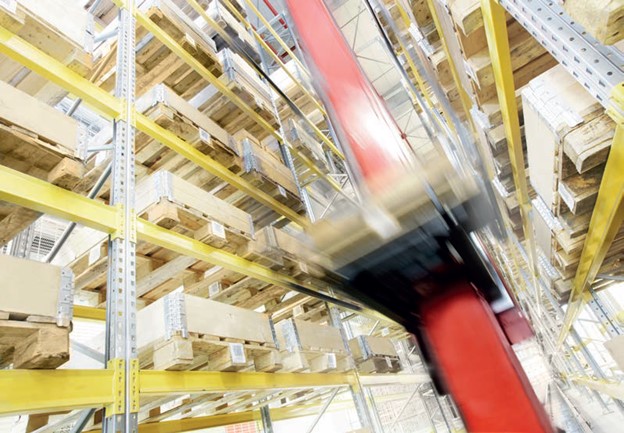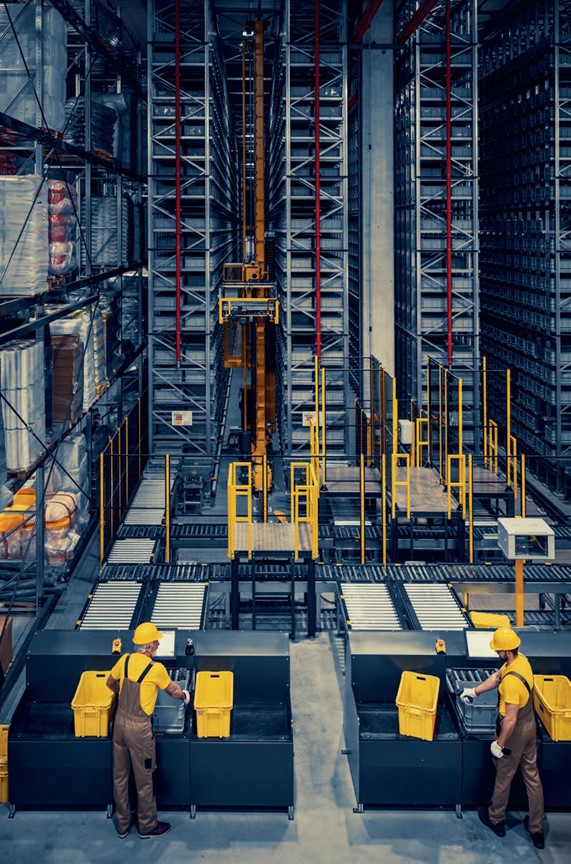Stacker Cranes: Regenerative Drives
18 January 2024Joon-Sung Lee, OEM sales manager, materials handling, ABB Drives, discusses how regenerative drives can unlock untapped energy savings for stacker cranes.
Historically, warehouse operators have focused primarily on ensuring their stacker cranes are performing at an optimal level at all times. However, this has come at the cost of inefficient use of energy. Now, as they come under increasing pressure to improve both costs and sustainability, warehouse operators need to maintain that same high level of stacker crane performance, while boosting energy efficiency.
A potential solution lies in the variable speed drives (VSDs), also known as variable frequency drives (VFDs) or drives, which play a crucial role in stacker cranes by precisely controlling the speed and torque of the electric motors. By adjusting the frequency and voltage supplied to the motor, a drive modifies the rotational speed, in contrast to conventional constant-speed motors. This optimises energy use, reduces wear, and enables a smooth system start-up.
But drives are not one-size-fits-all, and it’s important to select the right solutions for the right applications. Regenerative industrial drives are uniquely suitable for use in warehouse applications such as cranes, lifts, vertical conveyors and railguided vehicles (RGV).
In addition to controlling the speed and torque of the motor, these drives can recover excess energy when the motor has to be braked. They then feed the energy back into the power supply.
In applications such as lifts and stacker cranes, deceleration or braking energy is often wasted as excess heat. Unlike conventional drives that simply dissipate this heat into the atmosphere, regenerative drives convert it into usable electricity, enhancing energy savings and overall system efficiency.
TRANSFORM HEAT INTO ENERGY
Stacker cranes in particular stand to benefit from using regenerative drives due to their nature of generating excessive braking energy.
The high inertia of stacker cranes plays a role in the amount of braking energy that can be generated. The heavier the load and the faster the crane’s speed, the more kinetic energy is stored that can be transferred to regenerative power when braking the movement.
Vertical movement involves the additional force of gravity, as well as mechanical inertia. Thanks to gravity, the higher the load, the more potential energy is stored, which can be transferred to regenerative power when lowering the load. Electricity consumption is reduced by the amount of regenerated power, which brings about a significant reduction in energy cost.
With typical stacking heights drastically increasing over the last three to five years from 10m to up to 60m, and with travel speeds of up to 200m per minute or even more, the benefits of regenerative drives are more relevant than ever.
In a conventional drive with braking resistor configuration within a stacker crane, kinetic and potential energy is dissipated as heat and is wasted. The more braking power there is, the more difficult it becomes to handle this waste heat – it may even necessitate the installation of a costly cooling system.
In contrast, using a regenerative drive means that no external braking resistor is needed. This makes the drive installation simpler, with fewer wires and spare parts required. Plus, there is no need for extra cooling. Overall, this can reduce the installation footprint.
Furthermore, by avoiding the dissipation of excess heat into the environment, operators can also lower the risk of food, beverages, and other temperature-sensitive products from being spoilt or damaged.
MITIGATING HARMONICS
Another challenge facing warehouse operators is electrical harmonics. Harmonics are unwanted frequency effects or distortions that can occur in the electrical supply network, which can degrade the quality of the network and lead to degradation or damage to downstream power devices. This in turn can shorten the asset lifetime and increase maintenance costs.
Harmonic current is injected to the supply network from non-linear loads such as drives. System integrators often choose to oversize electrical equipment such as cables and transformers to compensate for the side effects, rather than address the root issue. This is not cost-effective.
A more sensible alternative is to identify solutions that deliver low harmonic content and high system efficiency. Fortunately, active front-end regenerative drives offer ultra-low harmonic levels, reducing harmonic content by up to 97% compared to conventional drives.
This reduction in harmonics avoids the need for excessive sizing of electrical equipment on the network. In addition, operators can enjoy higher total system efficiency compared to other solutions using additional harmonic filters. By minimising the need to upsize other equipment and with higher total efficiency, active front-end regenerative drives help to reduce both the capital and the operational costs of the whole system.
Active front-end regenerative drives offer a very promising pathway towards high energy efficiency and high performance in stacker cranes. And with the unprecedented cost savings this technology delivers, it might well be the intralogistics industry’s best-kept secret.


